
11 minute read
Beachside bliss Finding inner peace in Sri Lanka
BEACHSIDE bliss
Tempus checks in to the Sen Wellness Sanctuary in Sri Lanka
Words: Vineetha Menon
The path to wellness is never easy, and neither is the makeshift road that leads to Sen Wellness Sanctuary. Located about an hour’s drive from Mattala airport in the south, scenes of Sri Lankan town life whizz past, giving way to rolling greenscapes dotted with wildlife. Following a mud path that weaves next to wild trees, you’ll soon arrive – albeit a bit apprehensively – at a giant colonial-style wooden door. It opens to paradise.
Founder Dr Sam Kankanamge designed the Sen Wellness Sanctuary to be a place to nourish the mind, body and soul. The talented osteopath, who left Sri Lanka when he was just 18, is already a celebrated name in London. Today, drawing on his professional background, love for his country and a strong network of family and friends, his homeland sanctuary is a dream come true.
Voted one of the top 20 yoga retreats in the world by The Times, the chic sanctuary remains untouched by growing praise; a name whispered in awe among holisticminded circles. It’s nestled in a pristine national park and its premises boast a protected turtle nesting beach as well as picture-perfect lagoon. With a giant statue of Buddha at the courtyard and a curiously circular layout, the sanctuary is as impressive as the setting. The seafresh breeze fills every rounded nook and cranny, including the communal dining area and expansive yoga shala with inspiring views overlooking lush treetops, swinging monkeys and a flurry of birds.
The sanctuary’s luxury cabanas, designed by BrazilianAmerican architect Adriana Arbex, are a lesson in harmonious nature-inspired minimalism. With charming thatched roofs, the cabanas also feature private terraces bathed in sunlight, bathrooms that are open to the elements and a zen-like decor that champions local craftsmanship and materials. »
Once guests check-in, they schedule a consultation with the in-house Ayurvedic doctor, Dr Harshi. A powerhouse of knowledge, this demure woman plays the role of medical psychic and agony aunt perfectly. Ayurveda is a centuries-old science that originated in India, literally translating from Sanskrit as the ‘science of life’. Key concepts of the ancient healthcare tradition refer to a sense of interconnectedness, body constitutions (dosha) and existing lifestyles that collectively influence a person’s health and wellbeing.
Coming from a long line of healers, Dr Harshi is able to pinpoint ailments in a few minutes, and offers herbal-based solutions and life advice with such remarkable ease that it’s forgivable to think this is all one big new-age prank. Sure, the daily herbal medicines range from being quite palatable to downright confusing. Yes, the Ayurvedic ‘treatments’ can involve massages in the buff. And, of course, there is a one-love hippy vibe through every yoga session. But, make no mistake, this sanctuary will change your life.
In between Ayurvedic treatments, dining on fabulous Sri Lankan fare and twice-daily yoga sessions, stays are interspersed with visiting nearby towns, watching turtles, taking cooking lessons, and letting the healing power of nature work its magic. You’ll meet people from all corners of the globe – some who are experienced yogis and others who consider downward dog an instruction for pets. They are all here to slow down, reflect and re-energise.
On my first night at Sen Wellness Sanctuary, we all nervously bonded over a love of life and coconut-based stirfrys. As the days passed, we were all smiling and sharing stories as we dipped in and out of treatment rooms, glowing with vibrancy – and a lot of herbal oil. By the end of our stay, we were all inexplicably united.
Strip away the stunning setting and luxurious cabanas, and you’re still left with a truly lifeenhancing experience.



senwellnesssanctuary.com



The luxury cabins are a lesson in nature-inspired minimalism
Awakening a LEGEND
Tempus travels beyond Bora Bora to reconnect with mother nature in Tahiti

Words: Rachel Ingram
The legend goes that Tahiti didn’t start life as an island, but as a giant mountain-sized octopus, raised from the depths of the ocean to protect her people. The magical eight-armed creature was, according to one myth, a manifestation of Kanaloa, god of the sea, who, during a mighty battle with invadoers, taught the local people about the power of unity. When victory was theirs, the octopus transformed into a sacred mountain where she remains to this day, a symbol of peace.
While there are countless fables and endless versions of such stories, some more far-fetched than others, what’s certain is that these legends form an integral part of local culture. Tahiti is a magical island where you can almost feel the pulse of mother nature running through the earth, and locals are passionate about protecting their beautiful environment. And for good reason. »
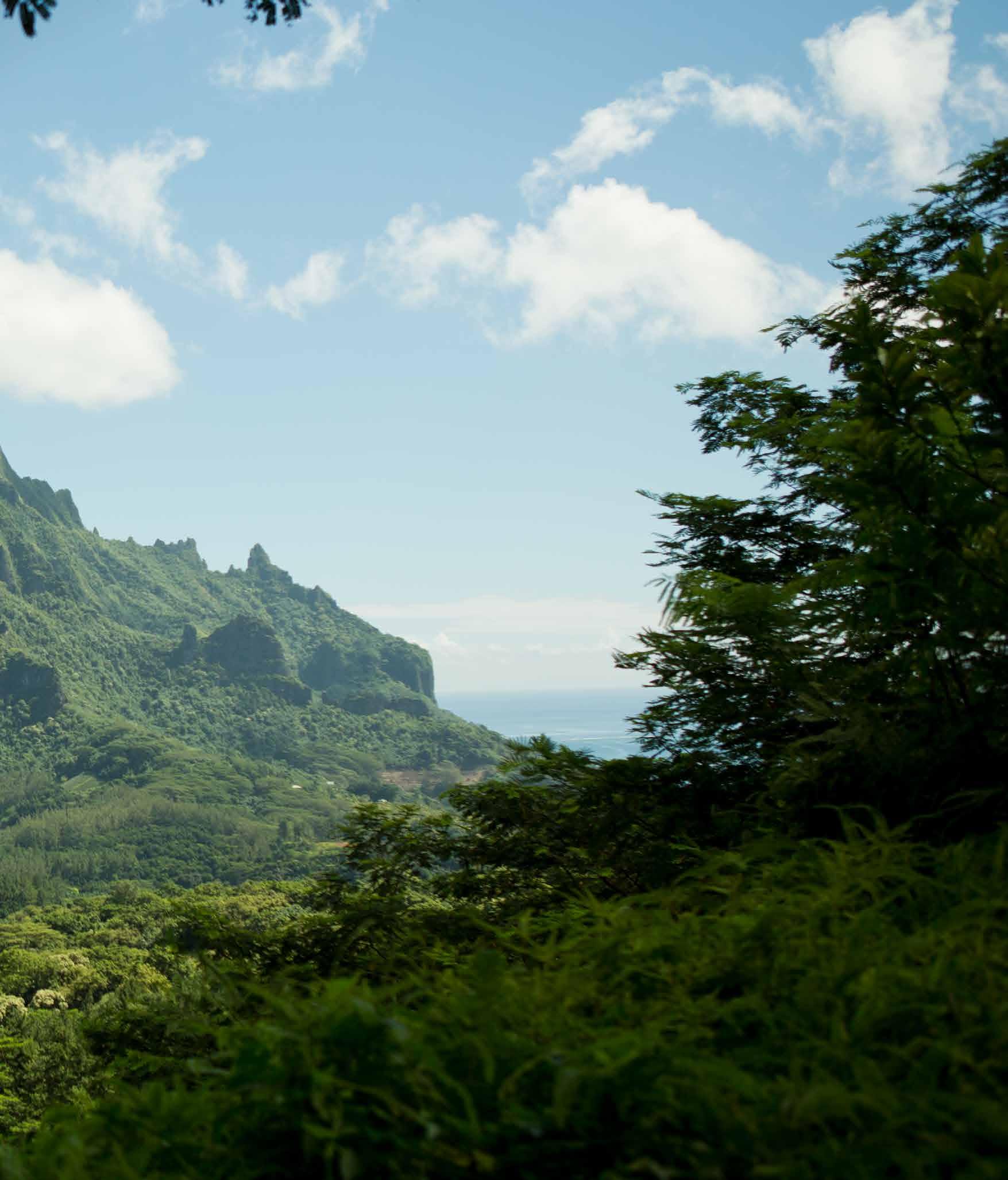
Unless you’re travelling by private jet, French Polynesia isn’t the easiest place to get to. Three flights took me via Paris and LA to Tahiti where a warm welcome by a local band on the edge of the runway dissolved my fatigue in a heartbeat. As we pass through security and enter the capital of Papeete (pronounced Pap-e-ete – local dialect makes a point of enunciating every letter), we walk out into a haze of music, aroma and colour, and flowers are looped around our necks. This level of joyful hospitality continues throughout our stay as we’re gifted flower necklaces upon arriving at every new resort and a chain of shells as we leave. We quickly discover that flowers are a big deal in French Polynesia. All the women, and many of the men, wear them behind their ears on a daily basis – behind your right ear if you’re single and your left if you’re married.
Rangiroa
French Polynesia is famously known for the party haven of Bora Bora and the exclusivity of The Brando, but there’s much more to discover if you look a little closer. Take Rangiroa. An hour’s flight from Tahiti, this tiny speck in the South Pacific is home to just two resorts, the most luxurious of which is Hotel Kia Ora Hotel & Spa.
Before landing, my breath was taken away by the colours of the ocean – brighter than the Maldives and bolder than the Seychelles. Arriving at the resort, I continued to be impressed. Luxury bungalows with private plunge pools pepper a verdant tropical garden that lies adjacent to a white sandy beach, lined with palm trees. The view of the ocean, where the palest of blues blends into turquoise and then navy, is interrupted only a number of elegant wooden overwater villas in the style of the wooden main house, which features a restaurant, a bar, a water sports centre and a communal infinity pool – enjoy the best view of sunset from the water’s edge, cocktail in hand.
In the restaurant, chefs cook up a storm of fresh seafood and international cuisine with prominent French touches – French Polynesia was colonialised by France, after all. Once a week after dinner, guests are treated to a unique taste of local culture, a traditional dance. Villagers of all ages came together to host a colourful performance involving lots of singing, clapping, leg wagging (the men) and hip shaking (the women). As elderly women provide the melody and children jostle with teenagers for their moment in the spotlight, it’s clear the whole community has come together. But this is typical of charming Rangiroa.
Besides tourism, the island’s main source of income is pearl farming. At Gauguin’s Pearl Farm, visitors can tour the facilities and learn first hand how the impressively large pearls are cultivated over up to six years. Visitors can also purchase a VAT-free pearls in a range of sizes, colours and grades at the on-site shop.
The clear waters surrounding Rangiroa are perfect for water sports, as we’d discover from a scuba diving session with Topdive. In fact, it’s one of the most popular bases for diving in all of French Polynesia thanks to the warm waters’ abundance of dolphins, manta rays and sharks.
If you’d rather stay above sea level, a boat trip with Oviri Excursions takes you deep into the heart of the lagoon where friendly reef sharks play in the waves. As we feasted on freshly caught seafood BBQ on the beach of our own private island, I thought, how could this experience be beaten? It turns out, in Tahiti, every island has its own charms.
Rangiroa’s clear waters make it easy to spot the local sealife


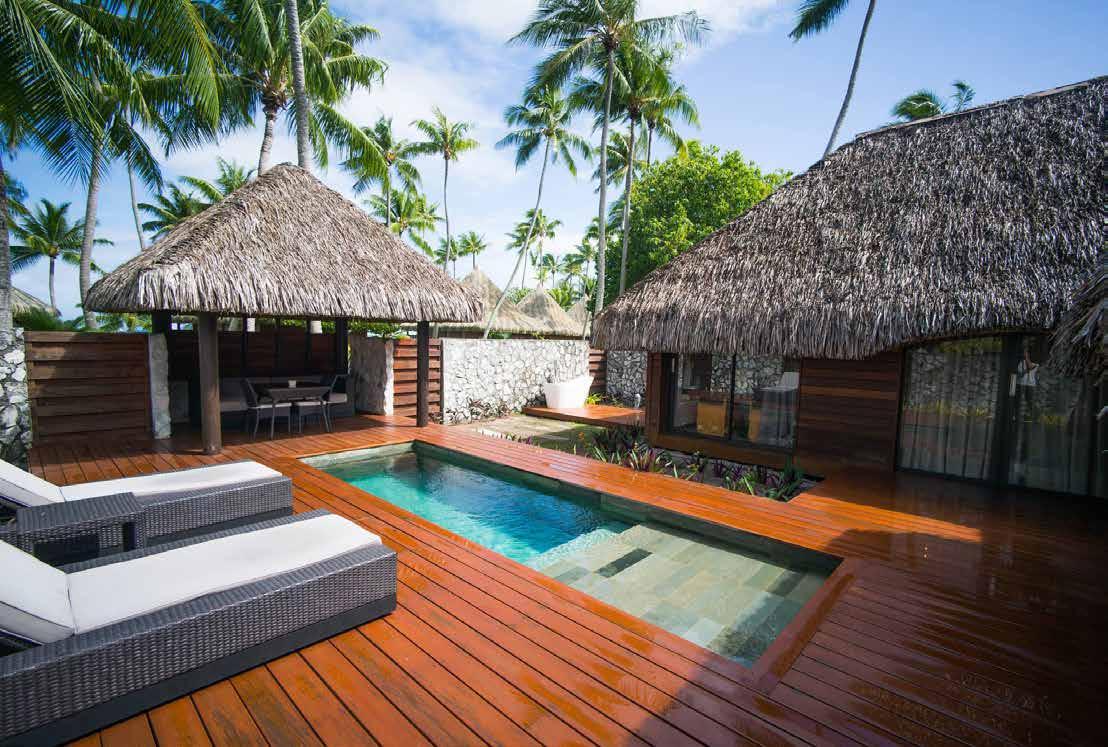
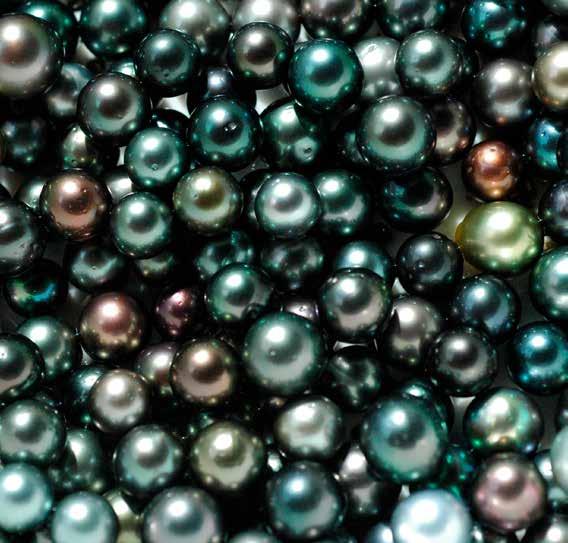

Hotel Kia Ora Hotel & Spa
Moorea
The second stop on our island-hopping itinerary was Moorea, the place where people from the more modernised Tahiti come to get away from it all. Here, locals live a more basic, simple way of life that focuses on their ever-important connection to nature.
For visitors, however, all the creature comforts they desire can be found at the island’s leading hotel resorts. There’s a plethora of options to choose from, from the stunning Hilton Moorea Lagoon Resort & Spa, which is home to some of the most incredible private overwater villas on the island, to locally-owned properties such as Manava Moorea Resort, where a sparkling infinity pool blends into the ocean.
It was at the latter where we met Sam, a Polynesian guide who gave us a real insight into local life. After a morning of traditional net fishing, we drove to his house – which he built from scratch by hand – where his wife cooked our fresh catches, while Sam proudly showed us around his garden where he was growing an incredible array of produce. As we sat around the table and ate, his wife, originally from New Zealand, explained how she had become so captivated by Moorea on a holiday that she ended up staying – and it was easy to see why. While it was tempting to revel in the simple life for longer, it was on to our third and final stop, Tahiti.
Tahiti
Drive along Tahiti’s coastline and you’ll quickly realise that it’s the most urbanised island in French Polynesia. With a busy marina, myriad shopping opportunities, and a host of dining options – a highlight is fine dining French eatery L’Instant Present – there’s much to discover.
From our base at the commendable Le Méridien Tahiti, we were able to explore the whole island easily – a personal highlight included a phenomenal Topdive whale watching trip where we threw caution to the wind (as is the Tahiti way) and jumped in with the sea life to snorkel with a mother and baby humpback whale.
We also took a day trip journey into the heart of the island. It was here where we were introduced to the ‘real’ Tahiti, a place free from the reach of modernity, where mother nature is queen. Winding roads led us on a journey through jungle and dormant volcanos, where we sampled fresh vegetation and learned all about the ways of the land. It was such an eye-opening experience that we were left speechless as our guide Teuai talked us through the power of the earth and our eternal connection to nature.


Hilton Moorea Lagoon Resort & Spa

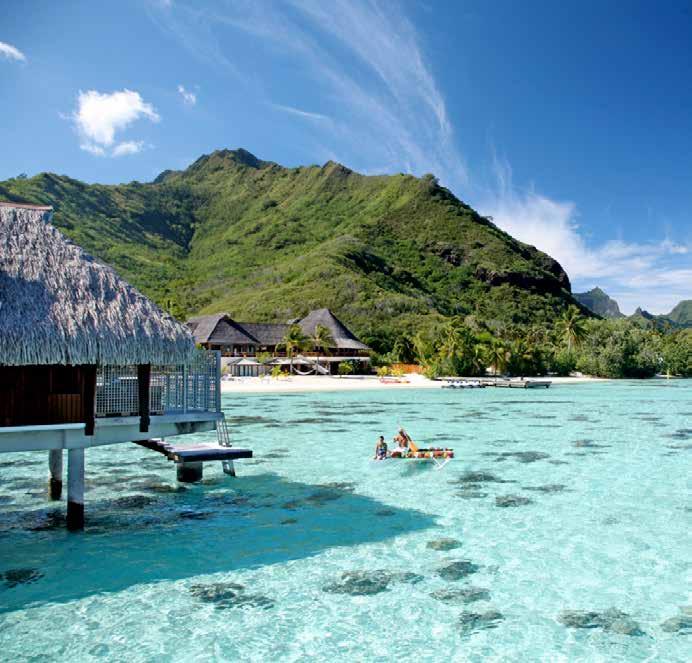

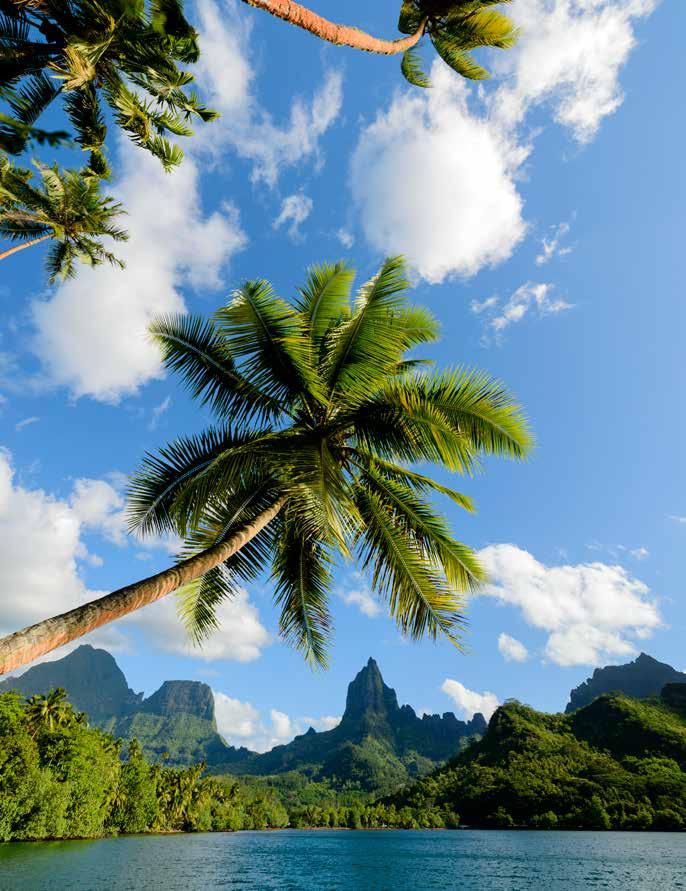
As French Polynesia is so far from the UK, its islands haven’t always been the obvious choice for British tourists but the release of hit Disney movie Moana, based on one of the many Polynesian legend, has drawn the world’s eye to the archipelago.
And while the modern Tahiti isn’t quite how it used to be, it was refreshing to see the pull of nature still keeping everyone’s feet on the ground. So, before you go booking flights to Bora Bora, consider looking elsewhere into the archipelago, and seeing what other myths and legends you can find in the magical world of Tahiti, Moorea and Rangiroa.
tahititourisme.uk Fly to Tahiti with Air Tahiti Nui






